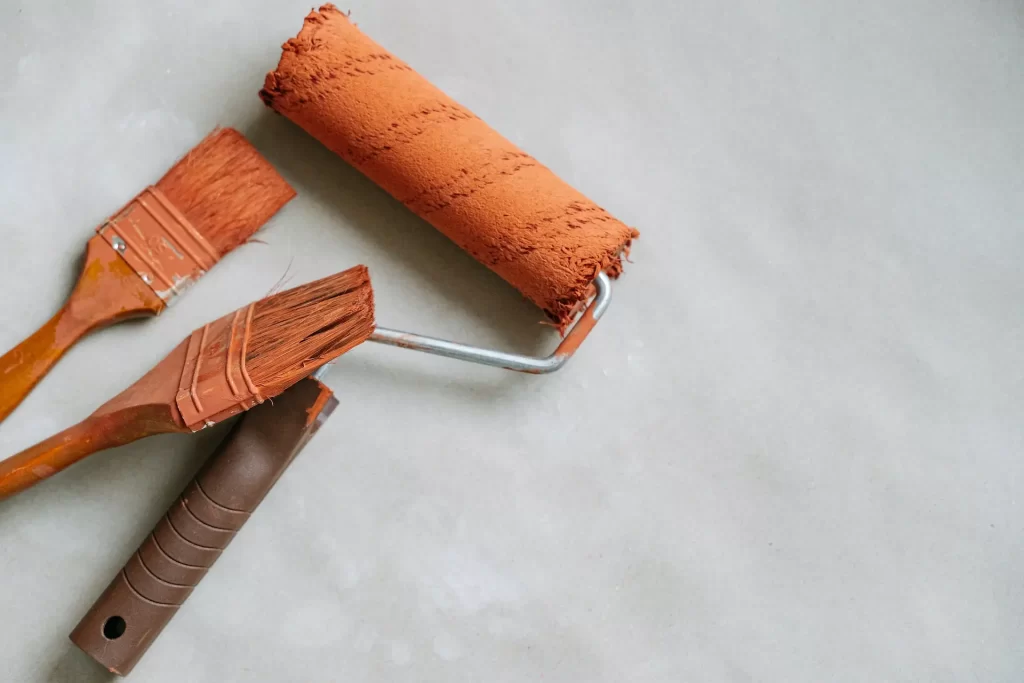
The proverb “if it sounds too good to be true, it probably is” remains true when it comes to painting supplies. There is simply no replacement for spending money on high-quality painting supplies, careful planning, and a conscientious work ethic. One of the most important things to keep in mind concerning paint equipment, according to Lou Manfredini, the home expert at Ace Hardware, is that you really do get what you paid for. The most frequent error I observe in homeowners is choosing cheap paint and tools, which often leads to a mediocre completed product.
Here are some of Manfredini’s most necessary paint supplies to help you achieve that immaculate finish. We’ll also highlight a few painter’s accessories that you can omit if your budget is tight. if your walls are in good condition and don’t require extensive repairs. (However, do ensure you invest in high-quality paint, as even the best tools can’t work miracles with low-quality paint.)
Must-Haves
Surface Cleaner:
A clean surface is essential since a filthy wall might prevent paint from adhering and cause ugly bubbles. Before painting, Lou Manfredini advises using a traditional cleaning like Spic and Span that has been diluted with a little water and applied with a sponge.
Tape for painting:
Invest in good painter’s tape, such 3M or Frogtape, and use it with care. Once in position, seal the edge by running a damp cloth along it. Be mindful of the tape’s removal window, which might be anywhere between 15 and 30 days.
Brushes:
Choose a 2 1/2-inch angled brush from recognized manufacturers like Wooster, Purdy, or Benjamin Moore for trim work and precise cutting in.
Rollers:
A 9-inch roller with a synthetic core and a 3/8-inch nap is a traditional option. Try to seal the space between your thumb and index finger to check the resilience of the core. Reliable roller covers are available from Ace and Shur-Line. For confined locations, small paint roller frames are particularly useful.
Canvas tablecloths:
Canvas drop cloths may be a little more expensive, but they are a wise investment for your painting jobs. For wall protection, a 4-foot-wide runner length is suitable.
a paintbrush cleaner
This crucial item ensures that even inexperienced painters can properly clean their high-quality brushes for subsequent usage.
Plastic Container:
Instead than relying on quart or gallon containers, pour paint into a plastic bucket for convenience.
Rolling plastic tray:
Choose a sturdy plastic tray over a metal one. Due to the hard nature of these trays, washing them is simple.
Extension pole for rollers:
For the majority of rooms, use an extended two-foot roller extension; nevertheless, when purchasing materials, take into account your ceiling height.
Strong Ladder
Considering the additional weight of your equipment, invest in a normal six-foot aluminum or fiberglass ladder that meets your weight requirements.
Touch-Up Device:
The Shur-Line Touch Up Painter, available at hardware stores, is a useful tool that keeps additional paint for quick paint touch-ups throughout your home.
Mixture Spackling:
For the majority of patching and nail hole jobs, Drydex or DAP Fast n’ Final are dependable choices. Due to its ability to shift from pink to white when dried, drydex is especially user-friendly. Caulk should always be available to seal cracks between trim and walls.
Sticky Knife:
Instead of a 7-in-1 tool, use a two-inch putty knife and a six-inch-wide taping knife with flexible blades. These implements work well for applying joint compound and mending cracks.
woven-mesh tape
Look for versions from reputable companies like Hyde, Purdy, or Shur-Line. These are ideal for covering larger holes.
Scrubbing Cloths:
Most sanding jobs only require a sponge with a medium and fine grit. Consider smoothing spackle with a damp sponge dipped in warm water rather than sandpaper to produce the least amount of dust possible. This technique completes the task without generating dust.
Skip It
Color Scheme:
It’s not necessary to have a specific tool to open paint cans; a flat-head screwdriver will work just fine.
Paint roller plastic tube:
The roller can be wrapped in plastic wrap and then put inside a sealed plastic bag to keep the paint from drying up if you’re resting your painting activity for the day but intend to pick it back up tomorrow.
Liner for paint trays:
If you use a high-quality hard plastic paint tray, you may do without these. Additionally, since you won’t be discarding a plastic liner after every painting session, it’s a more environmentally friendly option.
Paint swatches
You can dispense with paint pads in the majority of painting projects unless you’re utilizing them for those difficult-to-reach areas like under a toilet tank or radiator.
Fillable Paint Products
Tools that pull paint into their handles can be very difficult to use and keep clean. “By the time you refill it, you could have already finished your painting,” as Lou Manfredini so eloquently puts it. This restriction does not apply to the touch-up tool, which is an exception suggested by Manfredini.
How to Remove Old Paint from Walls
